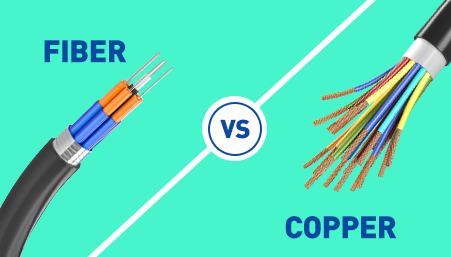How is fiber optic broadband different from traditional broadband connections?

Today, data is the key and speed is a very important aspect when it comes to transferring data. Everything that we consume today online is data delivered from one computer to another through the medium of wired connections.
Traditional or standard broadband (ADSL) connection uses copper phone lines to transfer data, while fiber uses a newer network of high-speed fiber optic cables. Fiber is much better when it comes to delivering big data across greater distances.
Fiber optic broadband deals were once very expensive as compared to slower traditional options however, with the growing demand, coverage and decrease in prices are making fiber the new standard. Here, we have listed some prominent differences between fiber optic connection and traditional broadband connection.
These days both cable and fiber optic broadband connections are available in speeds fast enough for anyone to do most of their work however, they can vary depending on your location, the kind of building you live in, the technology used in your local cabinet, wires used at your home and many others.
Fiber optic connection offers speed up to 10Gbps with symmetrical upload and download bandwidth. Cable internet offers speed that meets the demands of most small and medium-sized businesses however it’s much slower than a fiber optic connection.
When it comes to reliability, fiber optic broadband connection is considered to be more dependable than traditional broadband connections. Fiber optic connection offers a number of advantages when it comes to consistency and performance. Fiber gives the users a dedicated line while cable shares the connection with other users. A dedicated line saves the user from delays in data processing and latency. Cable internet speeds tend to slow down during high-volume data transfer.
There is a noticeable difference in the pricing between copper and fiber cables. In general fiber internet connection is going to cost more than traditional copper cable connection. Although the price gap is decreasing but it’s always good to check and consider all options before investing your money. The cost also depends on the brand and Internet provider you choose.
These are some of the most significant advantages when you compare fiber optic broadband connection over a cable or DSL connection:
A business that uses fiber will be more productive and give a higher output. Fiber offers increased reliability and less downtime along with more dependable access to cloud based services. Last but not the least with fiber optic connection you enjoy uninterrupted streaming and conferencing.
Hathway broadband offers end-to-end fiber optic connection for users. We recommend that you do read up more on fiber Internet before making a decision.
